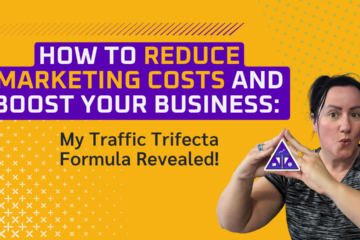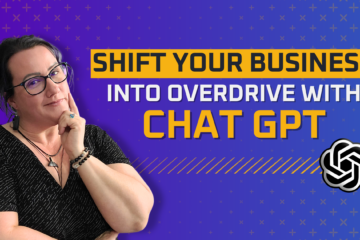How to Determine the Price of a Product or Service
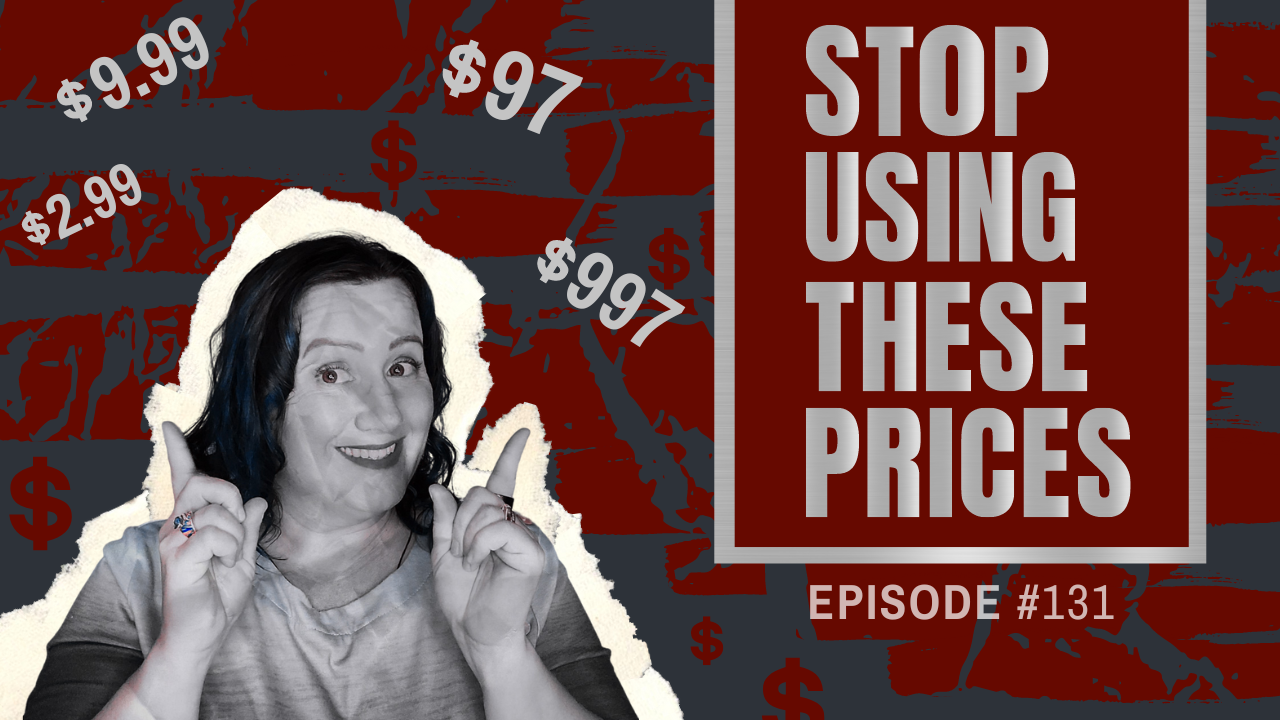
Are you wondering how to determine the price of a product you’re creating? Find out the new trends that consumers are leaning toward.
Quick Links:
- TIP: How to determine the price of a product [Infographic Download]
- Episode Overview – Pricing Psychology: How to Price Your Digital Products and Services
- Personal Note from Jenn Neal on How to determine the price of a product
- Episode audio [Podcast on Spotify]
- Blog Post – How to Determine the Price of a Product or Service
TIP: How to Determine Price of a Product

Time needed: 5 minutes
TIP: How to Determine the Price of a Product or Service
- Determine current market range
- Decide if you want premium or lowest price (or hanging in the middle)
- Outline the value your product or service brings to the customer
- Consider if this is an entry level item or being sold to existing customers
- Calculate hard costs
- Estimate variable costs
- Sum up estimated costs, multiply by at least 2
- Add in affiliate fees (if applicable)
- Compare your price to the total value – should be at least 1/10 of total value
- Consider where this puts you in relation to the market and adjust from there
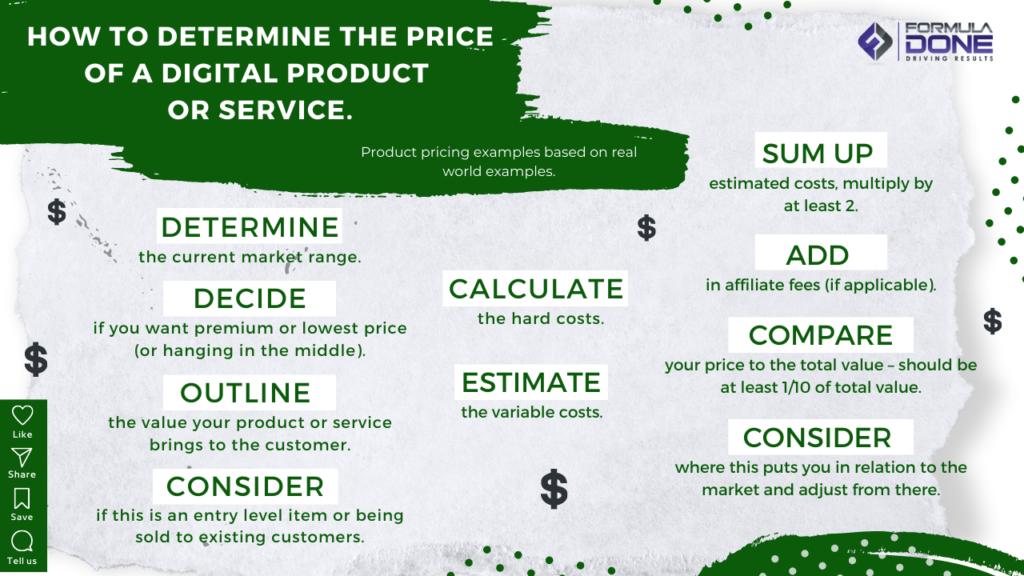

What’s In This Episode
Let’s face it; determining the price of your product or service can be a struggle. Are you still pricing things like 17, 47, 97, 997, etc? Or maybe you’re wondering if you’re charging too much, or too little. Well, you’re in luck! We’re talking about all things pricing and services – especially for coaches, authors, thought leaders, and the like. You’ll be surprised at the new trends consumers are leaning towards!
Jenn Neal on How to determine the price of a product
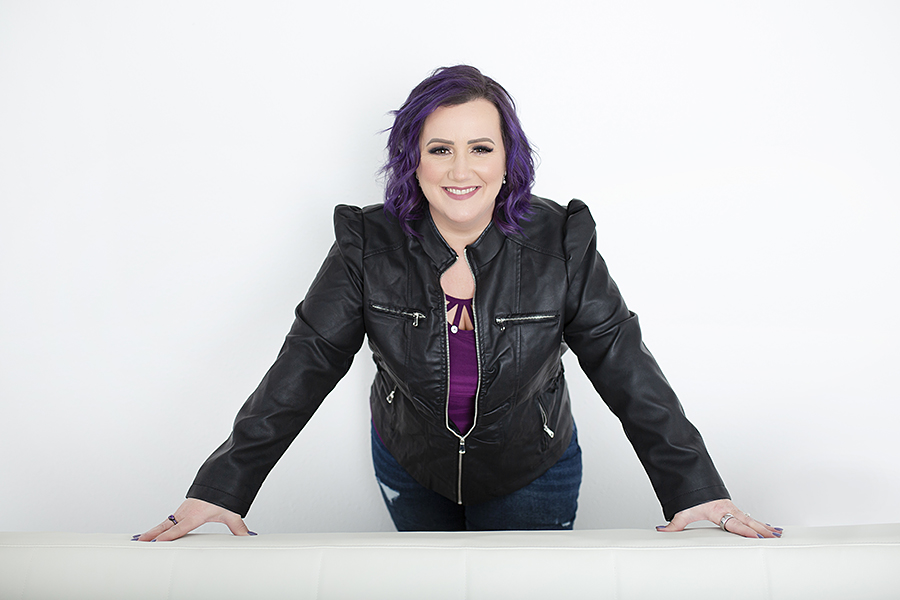
How to Determine the Price of a Product
There was a time in my life when I was scared to charge $25.00 an hour for my services. I had just started my business and did not think anyone would pay that much for my services. When I first started, I was quite unsure how to determine the price of a product or service. Digital product and service pricing eluded me, but I learned tons of tips and tricks over the years! I thought sharing those tips and tricks with you would be beneficial!

So, if you’re wondering how to determine prices for products and services, you’re in the right place! Let’s get to it!
Digital Products vs. Services
Alright. So, I know the line between a product and a service can sometimes get blurred. Honestly, is providing someone with a package of 3 consultations considered a product because it’s a set amount of consults? Or is it considered a service because you’re working directly with them? (It used to confuse me, too!) That being said, I think differentiating digital products and services is the best place to start.
A digital product is defined as an intangible item being sold online that is distributed an unlimited amount of times. Some digital products include memberships, ebooks, PDF downloads, downloadable templates, or e-courses (like the one we’ve just released, Content Connection Academy!).
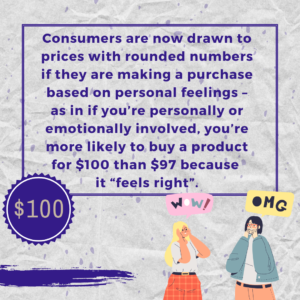
A service is an act of helping or doing work for someone. Instead of providing that person with an item they can use on their own, you’re doing work for them or with them. Excellent examples of services are Done With You services, where you work alongside your client, and Done For You services, where you do the work and provide a result for the client (usually something to benefit their business or life.).
Now that’s out of the way! I think we can all agree that we’ve got a better understanding of the differences between the two. Let’s move on to the good stuff!
Outlining Values
Did you know that consumers are likely to spend more money when they feel like the product they’re purchasing is cheaper than it is? Well, what better way to make your customers feel like they’re getting the most out of their money than by giving them the most bang for their buck? One of the most significant factors I base my pricing on is how valuable my product or service is to my audience! So, I’m going to let you know how to determine the price of a product or service based on its value. (There’s also some great tips in this article for how to do this!)

The Value of a Digital Product
When a customer is looking for a product, they want to make sure it solves all their pain points. That customer wants to know that they will benefit from what they’re purchasing – to ensure that their problem will be solved by using that product. In turn, you’ll need to prove to your customer that they’re getting a ton of value with your product! So, how can you prove to your potential customers that your product will help them immensely? There’s one way, in particular, I’ve witnessed used time and time again when it comes to digital products!
Have you ever been to a webinar? Of course, you have! Anyway, when it’s nearing the end, you hear about all the incredible bonus features you’ll get if you purchase that digital product. And right after those bonus features are shown, the value of each component is listed, and the host usually reminds you that you’re only paying this small amount, yet you’re getting this much extra for free (or some wording of that sort.)
By giving a visual, you’re seeing that the value you’re getting is much greater than what you’re paying. Having that visual works wonders! You’re not only showing your customers they’ll get a ton for their money, but you’re also showing that you’re willing to give them as many tools as possible to help them succeed!
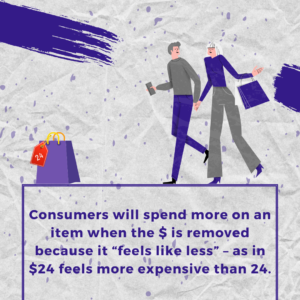
The Value of a Service
Placing a value on services is sometimes difficult. So, we’re going to focus on what you’re doing for your customer and their end result. What does your service mean for them? By providing this service, will you relieve them of a significant stressor in their life? Will the service help them double or triple their revenue because they’ll have more reach? Will it cure them of immense pain in their body? Well, it all depends on what your service is.
For a friend of mine, his end result was providing pain relief for his customers through medical massage. However, when people see the word massage, their mind automatically shifts to a massage you’d get at a spa. So, justifying his price point meant steering away from the word massage. He had to rethink the message he was sending to his audience.
So, I ask you, what message are you sending to your audience, and are you showing your potential clients what you can do for them? If your service can transform someone’s business or life, you can justifiably market your service as a top-tier service.

The Many Variables
While this is not the last of the tips and tricks I’ve picked up over the years, there are a few more that I’d really like to shine a light on!
- Where is your customer at in their journey? Are they just starting, or have they been running their business for some time and just can’t seem to scale the way they desire? This ties back into what your product or service can do for your customer and how much they’ll value from it!
- How long have you been offering your digital product or service? If you haven’t been providing it for long, you may be better off selling at a lower price point. As you sell your product or service and receive feedback on how much it’s helped your customers, you can consider raising your price. Showing your potential clients results others have had is a great way to show the value of your product or service!
- Check out your competitors and how they’re pricing similar products and services. How does their product relate to yours? Consider what your product or service provides that theirs doesn’t. It’ll help you gauge whether you should raise or lower your price or if you’re at a good medium. (If that’s where you want to be.)
- When pricing services, take into account if you have a team behind you and how much work they’ll be contributing to that service. Once you estimate the cost, multiply it by 1.5 or 2 to pad in for any surprises.
- If you’re offering a digital product, be sure to calculate estimated variables. Is the price of your product 1/10 or less of all of your bonus features? If not, you may consider adding a few extra bonuses to your stack to make it a no-brainer for your potential customers when they’re considering your product! (Remember, we want to give our customers as much value as possible!)
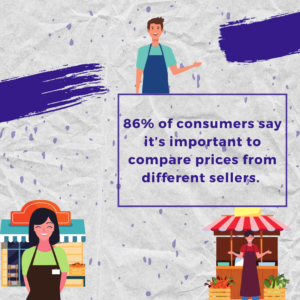
Everyone wants to make sure that they get the most from their money so it’s not surprising that 80% of consumers compare prices from different sellers.
Fun Facts
Whew! That was a lot of information! But I bet you can agree it was so worth it!
Okay, so I’ve got a fun fact for you! Did you know removing a dollar sign or putting a round number instead of 97 or 98 at the end of a price makes people feel like they’re not paying as much as they are? Insane, I know! Who would have thought?
Alright, guys! While I’ve had a ton of fun with you today, I’ve got to jet. And if you’ve been here with me this long, I’m pretty sure you have some digital products and services you’ve got to calculate pricing for!
Now, while we covered a lot of different points in this article, I’ve shared some more tips and tricks (and more fun facts and stories!) in episode #131 of The Content Toolbox! Make sure to check it out! (You can even listen to it on Spotify if you’d like!) Catch you next time!
Related Posts
The Ultimate Guide to Pricing Strategies
Another Look at Pricing Psychology Statistics
Habits Successful Entrepreneurs Practice That You Should Too!
Competitive Advantage in Marketing – Get Ahead of the Competition
